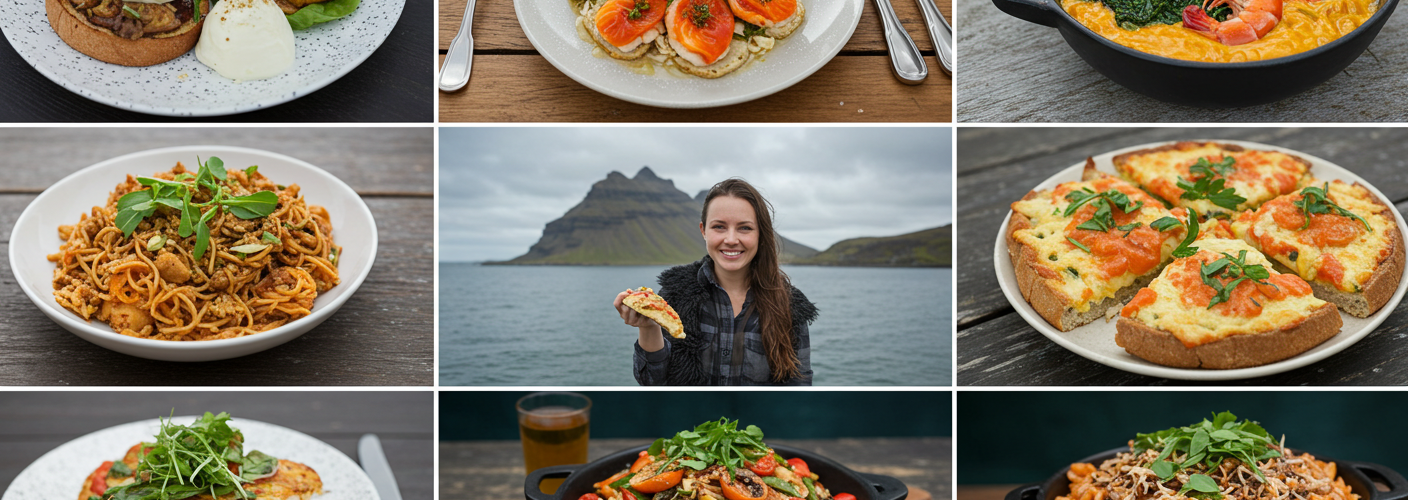Iceland, an island nation known for its stunning landscapes and rich cultural heritage, also boasts a unique culinary scene that reflects the country’s natural resources and traditions. With an emphasis on fresh, local ingredients and time-honored methods, Icelandic food is not only a treat for the taste buds but also a window into the soul of the nation’s history and lifestyle.
A Focus on Freshness
Given its geographical location, Iceland’s cuisine is heavily influenced by the surrounding Atlantic Ocean. Seafood is a cornerstone of Icelandic meals, with traditional dishes prominently featuring fresh catches such as cod, haddock, and herring. The famous Icelandic fish stew, known as “plokkfiskur,” is a comforting dish made from boiled fish, potatoes, onions, and a creamy sauce — a must-try for those visiting the region.
In addition to seafood, lamb is another staple in Iceland. The country is renowned for its high-quality lamb, which is often raised on the lush, green pastures of the countryside. One popular traditional dish is “hangikjöt,” smoked lamb that is typically served around the holidays but enjoyed year-round in many households. The unique smoked flavor is a delightful representation of the traditional preservation methods used by Icelanders, bringing a taste of history right to the table.
Embracing Tradition
Fermentation is a key technique in Icelandic food culture, resulting in dishes that are not only flavorful but also rich in history. One of the country’s most infamous traditional foods is “hákarl,” fermented shark. This dish may be an acquired taste, but it is often deemed a rite of passage for adventurous eaters visiting Iceland. Served in small cubes, hákarl has a distinct aroma and is best enjoyed with a shot of “brennivín,” Iceland’s signature schnapps.
Bread also plays a significant role in Icelandic cuisine, with a particular fondness for “rúgbrauð,” a dense rye bread traditionally baked in geothermal steam. This bread is usually served alongside fish, lamb, or even as a standalone with butter, showcasing the Icelandic approach to simple, hearty food.
Seasonal Focus and Sustainability
One of the most admirable aspects of Icelandic cuisine is its emphasis on seasonality and sustainability. Many chefs and home cooks alike celebrate what is available locally, embracing a farm-to-table ethos that has been present for generations. Farming practices, such as greenhouse cultivation powered by geothermal energy, allow for fresh produce like tomatoes and cucumbers to thrive, even in the harsh Icelandic climate.
Grocery store chains like “Iceland Food” are vital contributors to the Icelandic culinary landscape, offering not just everyday essentials but also local Icelandic products that reflect the country’s commitment to sustainability and quality. This emphasis on local sourcing fosters a strong connection between consumers and producers, enhancing the overall dining experience.
The Modern Twist
Icelandic chefs are increasingly putting their own spin on traditional dishes, combining time-honored recipes with modern culinary techniques. Restaurants in Reykjavik and beyond are pushing the boundaries of Icelandic cuisine while respecting its roots. Diners can enjoy contemporary interpretations that still pay homage to the ingredient-focused heritage while enticing adventurous palates.
In conclusion, Icelandic cuisine offers a delightful journey through the unique flavors and traditions of this beautiful island. With a focus on fresh, local ingredients, deep cultural roots, and an openness to modern interpretations, exploring the food scene in Iceland is a must for any visitor looking to experience the heart of the nation. Whether it’s savoring a dish of plokkfiskur, sampling hákarl, or enjoying a slice of rúgbrauð, there’s a world of taste waiting to be discovered in the land of fire and ice.




Add comment